How to Make Artificial Flower Arrangements Look More Realistic

By Hannah Twietmeyer
Potted houseplants are all the craze, but we know that they’re not ideal for everyone. While a pop of greenery can refresh any room, some houseplants are toxic to pets, and others require more care than we have time to give. We’re talking pruning, repotting, sunlight, water, fertilizer, and more. And if lush bouquets are more your thing, they cost a pretty penny only to wilt within a week’s time. Is the fresh, natural look desirable? Yes. Is it realistic? Not always.
For those of us that just don’t have the schedule, lifestyle, or green thumb to tend to live plants, or if the shelf life of your bouquets just isn’t justifying their price, there are always faux options. Artificial flowers can add that extra color and flair to your foyer or dining space — and they never die. Here’s everything you need to know about making fake flower arrangements.
Photo via Holly Lengner - Lost Mom
Why Use Fake Flowers?
Aside from being completely self-sufficient and never wilting, fake flowers include a long list of positives that might just convince you to make the switch:
- Choose any type of flower, anytime. Unlike real blooms, fake flowers don’t have to be in season. If you want to buy a bouquet of poinsettias in June or lilies in December, you have free reign to do so.
- No allergies. No one likes to clean up pollen. Faux flowers don’t shed pollen (since there isn’t any), so those with sensitivities to pollen need not worry, either.
- Can be budget-friendly. Fake flowers can be cheaper than their real counterparts, but not always — it depends on the material. Silk flowers tend to be more expensive than the real version, but they last virtually forever.
- No bugs. Unlike a bunch of fresh blooms, fake flowers won’t attract bugs. This is a huge plus for those of us who like to keep a bouquet in our kitchen, where fruit flies might already be lingering.
- DIY arrangements are easier. Fake flowers make for a more forgiving arrangement process. You still don’t want to trim them too short, but you have more control over the type of flowers you want. They also won’t get tattered or bruised if you change your mind a few times.
At the same time — especially if you prefer live plants — there are some downsides to fake flowers. You won’t get that fresh floral scent with a bouquet made from polymer or fabric, and the flowers that look the most “real” usually cost more than the actual ones. Still, you’ll have them around for forever versus tossing them in the trash after a week.
Types of Artificial Flowers
When it comes to faux flower types, the options are almost limitless, but things can get overwhelming pretty quickly. The decision isn’t just between roses and tulips, or red and white petals, but between materials as well. Price also fluctuates from flower to flower; not all fake flowers cost less than the live versions. We break it all down for you below.
Paper Flowers
Paper flowers are delicate versions of the real thing and have a wide range of styles and colors. Types of paper blooms that look the most “real” can often be bought from specialty stores or online boutiques, but you can also try your hand at making your own.
Paper flowers come in a limitless array of hues and customizable textures, making them lifelike, but also quite dramatic and creative if you so wish. Prices can range from under $20 for a bunch, like these peonies, to a few hundred, like this dahlia bouquet.
Flowers with thin, delicate petals, like hydrangeas or ranunculuses, are probably better suited for paper composition than flowers with thicker, hardier petals, like tulips. Also keep in mind that paper flowers won’t be as durable as other options out there, especially if they come into contact with water.
Foam Flowers
Fake flowers can be pretty sturdy if they’re made from fine-grade foam. According to floral supply store decoflora, foam flowers are usually fray, crush, and crease-resistant, and their brilliant color won’t bleed onto nearby fabrics or other bouquet additions.
Blooms with thicker, more visible petals tend to look the most realistic with foam, like these roses from Amazon or these even denser rosebuds. They also tend to be relatively inexpensive, often selling for just a few dollars — quite the bang for your buck, considering their long-lasting durability.
Fabric Flowers
Think of “fabric” as an umbrella term for faux flowers made of things like cotton, tulle, felt, silk, and more. Different fabrics suit different settings, and like many decorative pieces, it really comes down to personal preference:
- Felt can be used in winter-themed bouquets, where the thick material makes sense with the cold weather, but they aren’t very realistic.
- Cotton is light, airy, and natural, making it appropriate for the warmer seasons.
- Tulle and silk fit best in elegant settings and are quite popular choices for DIY wedding bouquets of faux flowers. Silk flowers, specifically, come in a wide variety of kinds and colors and are usually pretty easy to find.
Wax Flowers
Wax flowers are just what they sound like — artificial blooms coated in a layer of wax. The flowers themselves are often made of silk or polyester fabrics, so they’re high quality to begin with. Then, they’re sealed with a thin layer of wax, which allows for intricate detailing and texture to form or be etched in; think veins in the petals and leaves, or other impressions.
Because wax flowers tend to be some of the most realistic-looking, they’re often pricier than some of the other options out there. Latex faux flowers, or latex flowers coated in a thin layer of wax, are similar but harder to find.
Polymer Flowers
Polymer flowers, sometimes referred to as “real touch” or “fresh touch” flowers, are often the most expensive type of faux blooms you can get your hands on. They not only look the most realistic (sans frayed fabric edges and glue) but they feel real. Usually made from a blend of foam, latex, or polyurethane, according to Zola, these types of artificial flowers will likely make your bouquet the most believable. They’re also available in a wide variety of colors and types, but flowers with thicker, sturdier petals, like orchids and calla lilies, will look the most realistic.
Photo via Zest it Up
How to Make an Artificial Flower Arrangement
Caught up on all your different options? Now you’re ready to put your DIY skills to the test, but with absolutely no pressure. Be as creative or as simplistic as you want — flower arrangements range from just a few stems to a full vase, and come in all sorts of colors and styles. They’re completely customizable, and the final look is up to you. Listed below is everything you’ll need to get started. No soil or water needed here!
Tools and Materials Needed:
- Artificial flowers of choice
- Scissors, hand shears, or wire cutters
- Vase
Step 1: Select Your Flowers
After reviewing the section above, “Types of Artificial Flowers,” take your pick! Remember, unlike live blooms, faux flowers don’t have to be in season. You have complete control over the colors and type, as well as the volume of flowers you’re working with. Settle for just a handful of stems if you’d like a minimalistic arrangement, or pack as many as you’d like into your vase. There’s no wrong way to DIY your floral arrangement as long as you have a vision.
Step 2: Choose a Vase
While your flowers are a centerpiece, the vase is their vessel. If you don’t already have one in mind, make sure that you consider the size and color of the flowers you’re working with before you go out and buy a vase.
Step 3: Trim Unwanted Leaves and Stems
Some fake flowers have stems made from paper-wrapped metal wire. This can be especially tough to cut through, so if your scissors aren’t doing the trick, try hand shears or wire cutters.
You’ll first want to remove any leaves that you find unnecessary; for real flowers, leaves that sit below the vase’s water line usually go. Then, go ahead and trim the bottom of each stem to an appropriate length. This depends on the type of flowers and vase you’re working with, so again, it’s up to you, the florist, how much of the stem you trim off. Just make sure you do so carefully, and at an angle if you want to treat your faux stems like real ones.
Step 4: Arrange
Start with your largest flower blooms, and start arranging them stem-first in the vase. Then add your next layer of flowers that are just a tad smaller, and continue the pattern. As you add more flowers and more layers, your arrangement will start to take shape, but it doesn’t need to be stiff and structured if you prefer the “relaxed” look. Every now and then, spin the vase around to make sure things look balanced, and rearrange as needed.
Nothing is permanent here; if a few stems are still too long, pull them out for a quick trim and rearrange. Once you’re satisfied with the arrangement you’ve created, you’re all set!
Photo via Destiny Alfonso
Tips to Make Artificial Flowers Look Real
If you want to go the next step to make your brand-new bouquet look even more realistic, try some of these tips and tricks.
- Add greenery. The arrangements that look the least natural are the ones that look perfect. Avoid filling your vase with just roses; add some faux leaves, greenery, and branches into the mix.
- Fluff the petals, bend the stems. Rarely are real flowers perfectly straight. Give each piece of your arrangement some character by adding some bends in the stems, and tousle the petals a little bit.
- Mix and match with length. Many artificial flowers that are sold in packs come cut the exact same length. To keep things looking more realistic, according to Living Spaces, grab your scissors and create some variations in height.
- Use an opaque vase. Since there isn’t any water to see, reach for an opaque vase. This will hide any stiff-looking stems, leaves, or wires poking out.
- Mix in fresh flowers. If you aren’t ready to fully commit, go ahead and mix in some fresh flowers with your faux arrangement! It’s a great way to compromise and figure out which option you prefer.
We love to see your DIY projects! Drop some photos of your artificial flower arrangements in the comments below.



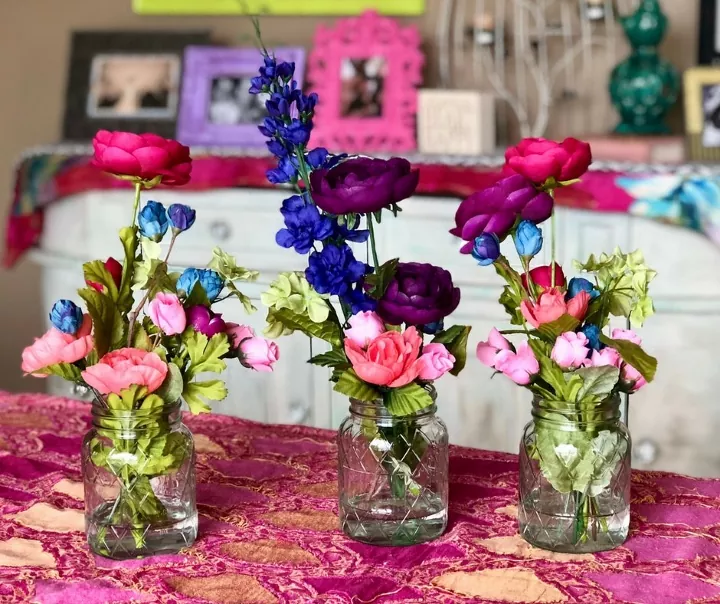


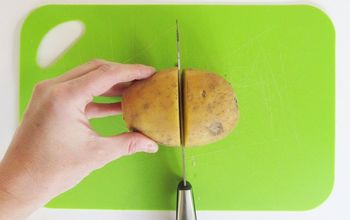
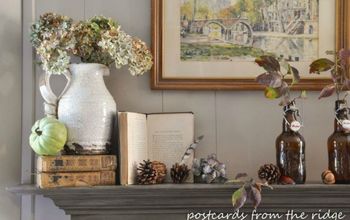
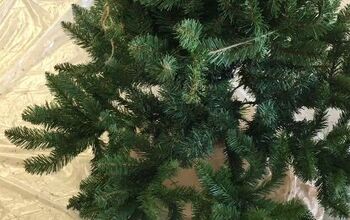
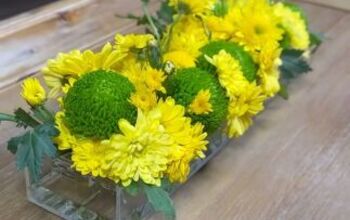
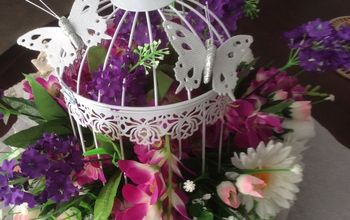
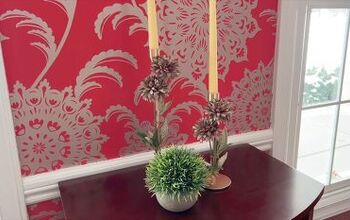
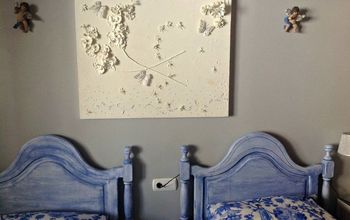
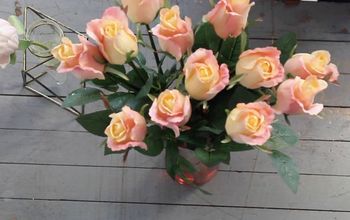
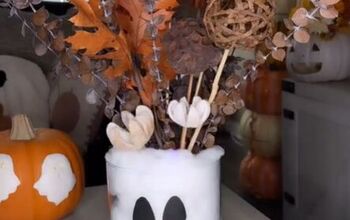
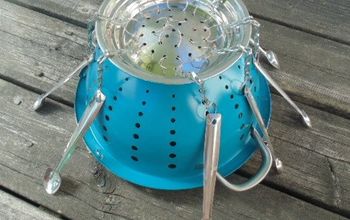
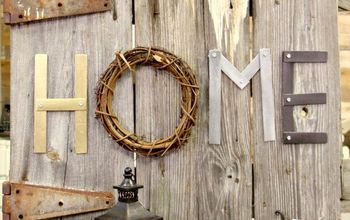
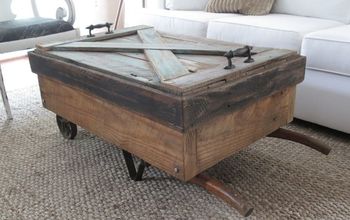
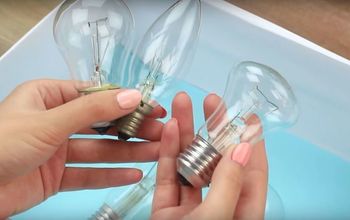

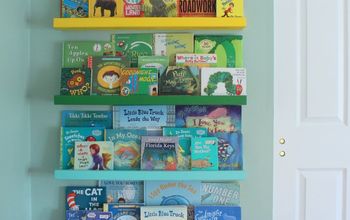
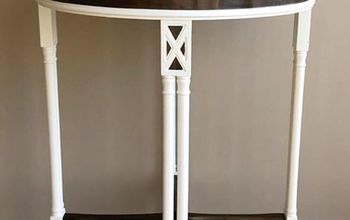
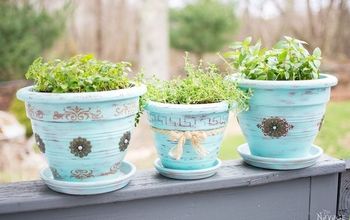
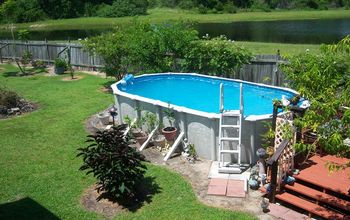
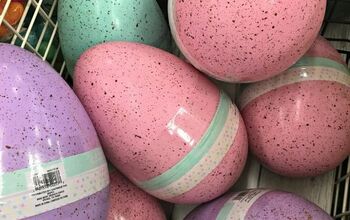
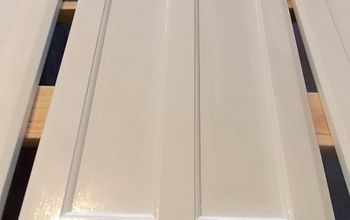
Frequently asked questions
Have a question about this project?